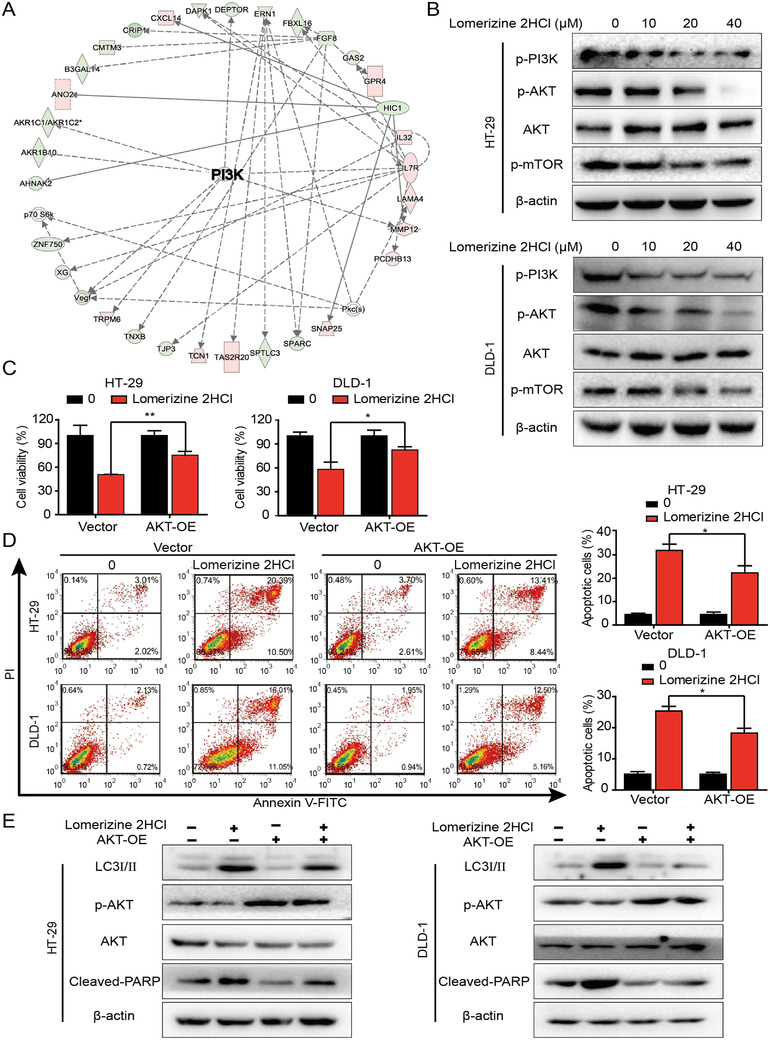FIGURE 2.

Lomerizine 2HCl suppresses the progression of CRC by inhibiting the PI3K/AKT/mTOR signaling pathway. (A) IPA software has been carried out with RNA‐Seq and identified a significantly altered functional network. (B) CRC cells were incubated with 0, 10, 20, or 40 μM lomerizine 2HCl for 48 h, and the levels of p‐PI3K, AKT, p‐AKT, p‐mTOR, ERK, p‐ERK, MEK, and p‐MEK were detected by Western blot. (C) CRC cells were transfected with AKT plasmid or empty plasmid and then subjected to lomerizine 2HCl (40 μM) treatment. Cell viability was measured by CCK‐8 assay. (D) With the absence or presence of AKT plasmids, CRC cells were treated with lomerizine 2HCl (40 μM), and then cell apoptosis was detected by flow cytometry. (E) Western blot analysis was performed to measure the expression of LC3I/II, AKT phosphorylation, and cleaved PARP in the CRC cells treated with lomerizine 2HCl (20 μM) in the presence or absence of AKT plasmids. Bars, SD; *p < 0.05, **p < 0.01, ***p < 0.001
